112/13/D4
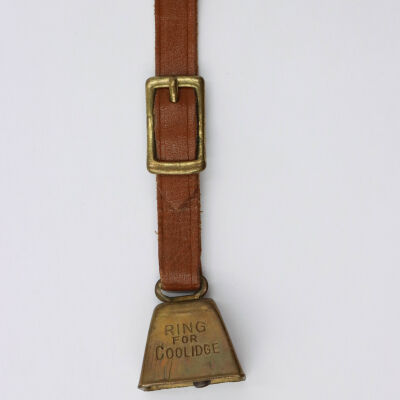
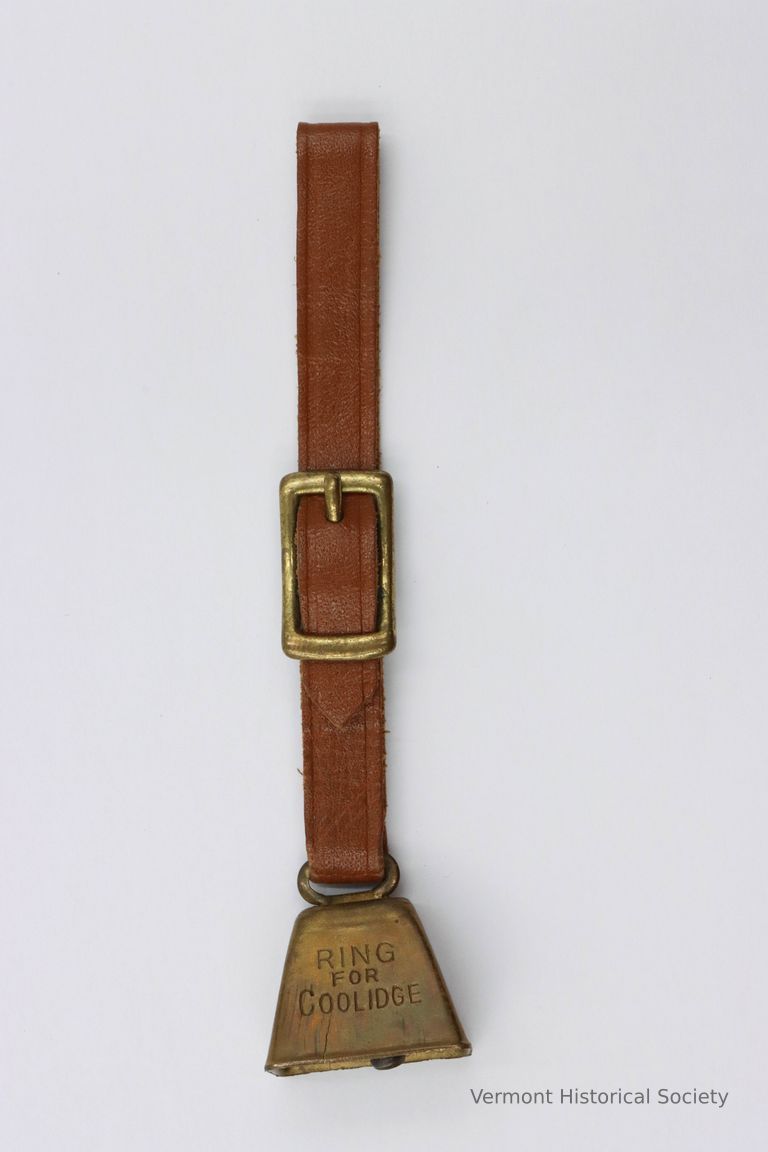
Bell
Name/Title
Bell
Lexicon
Description
Small bell on leather strap with buckle. Bell says "Ring for Coolidge". Bell is brass colored, strap is medium brown color.
Acquisition
Accession
1976.17
Relationships
Related Person or Organization
Coolidge, Calvin (1872-1933)
Person or Organization
Made/Created
Date made
1924
Dimensions
Entry/Object ID
1976.17.8
Context
Produced for the presidential campaign of Calvin Coolidge of Plymouth, Vermont
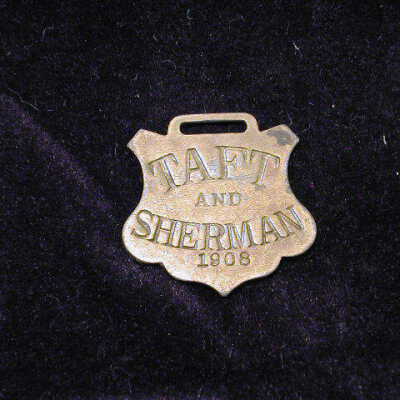
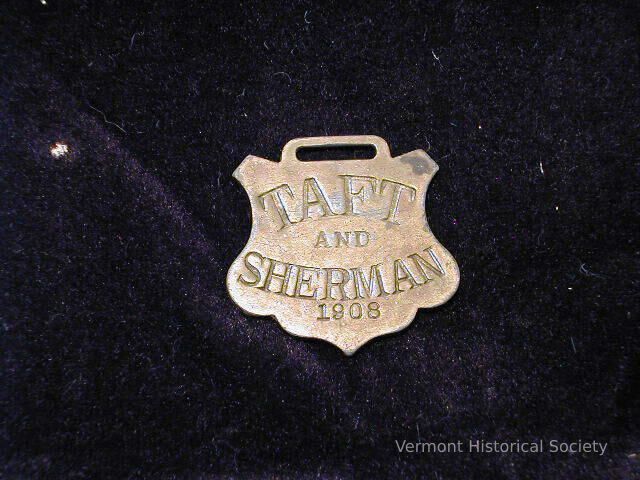
Campaign Badge
Name/Title
Campaign Badge
Description
Part of a campaign badge - probably hung on a ribbon originally. Reads "Taft and Sherman 1908"
Acquisition
Accession
1971.46
Relationships
Related Person or Organization
Taft, William Howard (1857-1930), Sherman, James Schoolcraft (1855-1912)
Dimensions
Entry/Object ID
1971.46
Context
According to Encyclopedia Britannica online, "(Outgoing President Theodore) Roosevelt threw his support behind William Howard Taft in early 1907. Taft was Roosevelt’s secretary of war and a trusted adviser, and the two had similar political ideas. Having been handpicked by the president, Taft easily won the Republican nomination on the first ballot when the Republican convention met in June 1908 in Chicago, defeating, among others, Vice Pres. Charles W. Fairbanks , Speaker of the House Joe Cannon , and Sen. Robert La Follette . New York Congressman James S. Sherman was chosen as his running mate." Taft defeated Democrat William Jennings Bryan on Nov. 3, 1908 to become President.

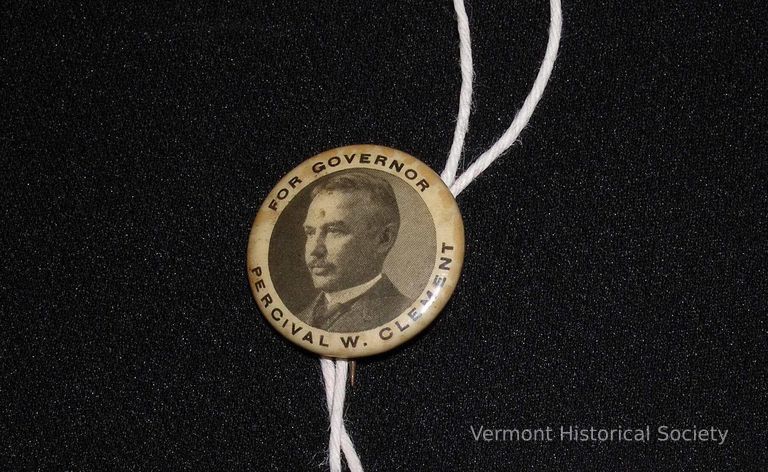
Campaign Button
Name/Title
Campaign Button
Lexicon
Description
Campaign button, "For Governor/ Percival W. Clement" with black & white photo in center. Reverse side has a paper backing which reads: "The Whitehead & Hoag Co./ Newark, N.J./ Allied Printing/ Newark, N.J./ Patented July 17, 1894/ April 14, 1898/ July 21, 1898"
Acquisition
Accession
2006.12
Relationships
Related Person or Organization
Clement, Percival W.
Person or Organization
Made/Created
Date made
1902-1918
Manufacturer
The Whitehead & Hoag Co.
Dimensions
Materials
Material
Metal, Paper
Entry/Object ID
2006.12.16
Context
Percival W. Clement of Rutland, Vermont, ran unsuccessfully for governor in 1902 and 1906. He ran successfully in 1918.
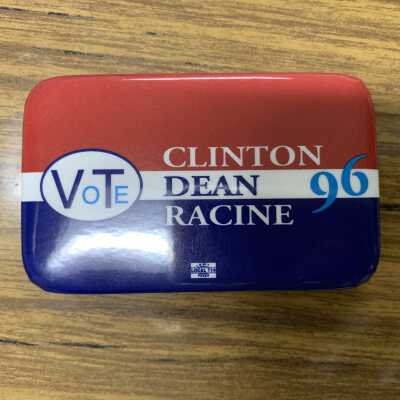
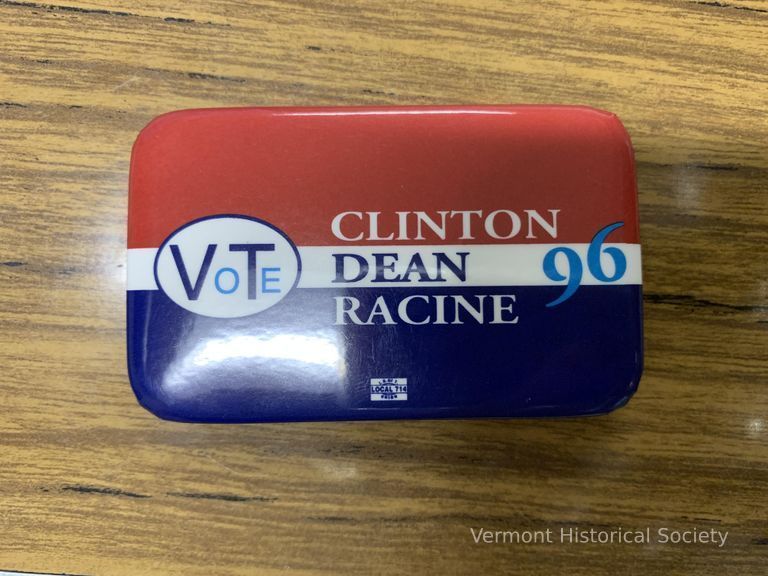
Campaign Button
Name/Title
Campaign Button
Lexicon
Description
Rectangular campaign pin that reads: VoTe (in an oval at the left) with "CLINTON/DEAN/RACINE 96" to the right. Note the V and T in vote are larger than the o and e and are in dark blue block letters.
red, white, blue
red, white, blue
Acquisition
Accession
1997.13
Relationships
Related Person or Organization
Clinton, William Jefferson (b. 1946), Dean, Howard Brush (b. 1948), Racine, Douglas (b. 1952)
Made/Created
Date made
1996
Materials
Material
Metal
Entry/Object ID
1997.13.2
Context
Democratic campaign button for presidential candidate Bill Clinton, Vermont gubernatorial candidate Howard Dean and Vermont lieutenant governor candidate Doug Racine. Clinton was running for re-election and so was Dean. This was Racine's second try for lieutenant governor, having lost to Republican Barbara Snelling in 1994. He would go on to win re-election three more times, as would Dean, both leaving these offices in 2003.
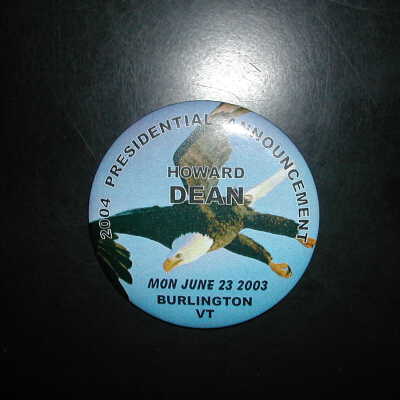
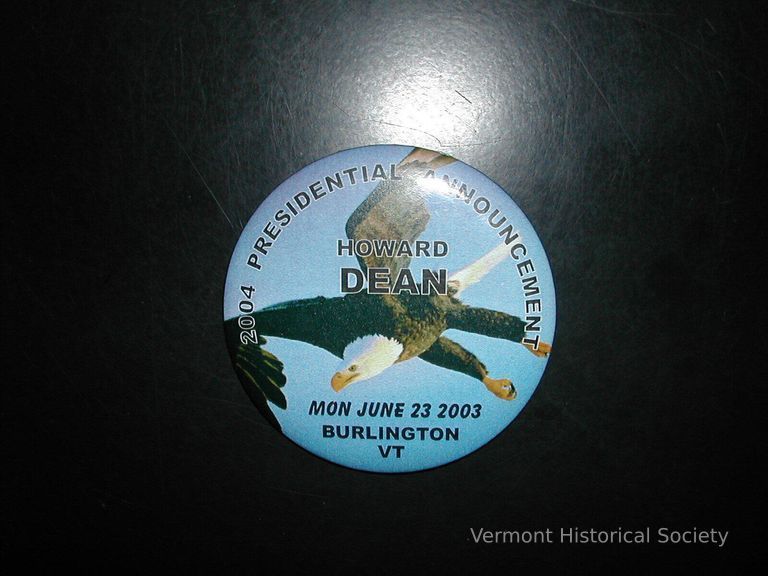
Campaign Button
Name/Title
Campaign Button
Lexicon
Description
Button with light blue/gray sky background with a bald eagle swooping down in flight. Around perimeter is: "2004 Presidential Announcement / HOWARD DEAN / MON JUNE 23 2003 / BURLINGTON / VT"
Acquisition
Accession
2004.9
Relationships
Related Person or Organization
Dean, Howard Brush (b. 1948)
Person or Organization
Made/Created
Date made
2003-2004
Dimensions
Materials
Material
Plastic, Metal
Entry/Object ID
2004.9.2
Context
A button from Howard Dean's campaign for president in 2004. Dean, a Democrat, was governor of Vermont from 1991 to 2002. From the Encyclopedia Britannica, "Dean began his political career in 1982 as a state representative in the Vermont House of Representatives. He was then elected lieutenant governor in 1986. Dean became Vermont’s governor on August 14, 1991, after the death of Gov. Richard Snelling."
"On May 30, 2002, Dean mailed the FEC papers establishing Dean for America, a presidential campaign committee. Dean for America is headquartered in Burlington, Vermont. The campaign started in a small office in Montpelier, moved to offices in downtown Burlington at the beginning of September 2002, and moved to other offices in Burlington in early May 2003." (Source: http://p2004.org/dean/deanorg.html)
He withdrew from the presidential race in February of 2004 after a series of disappointing finishes in early caucuses and primaries.
"On May 30, 2002, Dean mailed the FEC papers establishing Dean for America, a presidential campaign committee. Dean for America is headquartered in Burlington, Vermont. The campaign started in a small office in Montpelier, moved to offices in downtown Burlington at the beginning of September 2002, and moved to other offices in Burlington in early May 2003." (Source: http://p2004.org/dean/deanorg.html)
He withdrew from the presidential race in February of 2004 after a series of disappointing finishes in early caucuses and primaries.

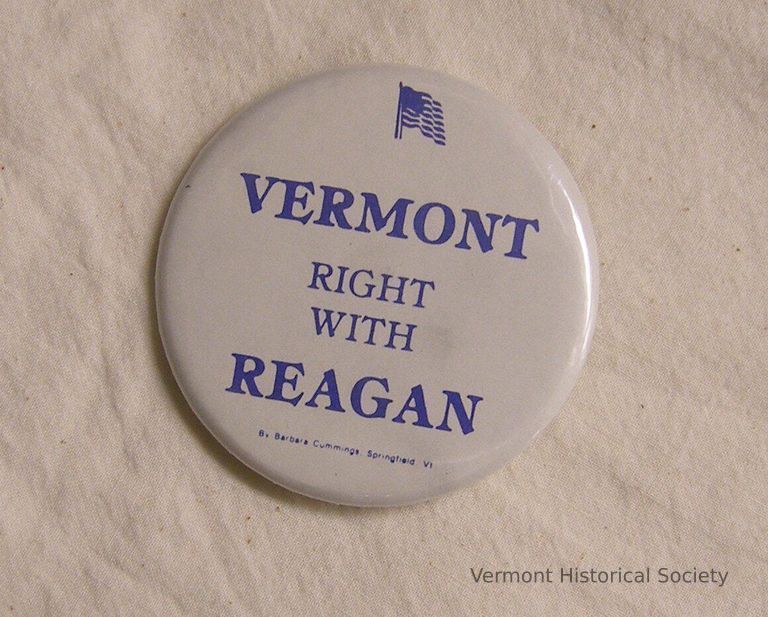
Campaign Button
Name/Title
Campaign Button
Lexicon
Description
Round white button with safety clasp and the blue inscription, "VERMONT RIGHT WITH READY/By Baraba Cummings, Springfield, Vt." At the center top is an image of a waving United States flag.
Acquisition
Accession
2012.50
Relationships
Related Person or Organization
Reagan, Ronald Wilson (1911-2004)
Person or Organization
Made/Created
Artist Information
Cummings, Barbara
Artist
Date made
1980
Dimensions
Dimension Description
Overall
Materials
Material
Metal, Plastic
Entry/Object ID
2012.50.23
Context
Produced for the presidential campaign of Ronald Reagan
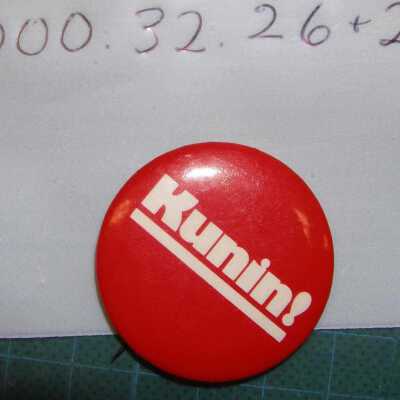

Campaign Button
Name/Title
Campaign Button
Lexicon
Description
Red with white letters "Kunin!"
Acquisition
Accession
2000.32
Relationships
Related Person or Organization
Kunin, Madeleine May (b. 1933)
Person or Organization
Made/Created
Date made
1979
Manufacturer
Votes Unlimited
Dimensions
Materials
Material
Metal
Entry/Object ID
2000.32.27
Context
"MADELEINE M. KUNIN was born in Zurich, Switzerland. She graduated from the University of Massachusetts in 1956 and received a master’s degree from Columbia University in 1957. She earned another master’s degree from the University of Vermont, and worked as a journalist, author, and college professor. She was first elected to the Vermont House of Representatives in 1972, and was selected Democratic Whip in her second term. In her third term, she chaired the Appropriations Committee. She was elected lieutenant governor in 1978 and won reelection in 1980. During the spring of 1983, she taught at the Kennedy School of Government at Harvard University. Governor Kunin also taught at Middlebury College and St. Michael’s College. She was elected the first woman governor of Vermont in 1984. (serving through 1991) During her tenure, she focused on education and the environment and chaired the New England Governors’ Association. She founded the Institute for Sustainable Communities and served as its first board chair from 1991 to 1993. During the presidential administration of Bill Clinton, she served as Deputy Secretary of the U.S. Department of Education. From 1996 to 1999, she was U.S. Ambassador to Switzerland. Kunin went on to become a Distinguishing Visiting Professor at the University of Vermont and St. Michael’s College."
Source: National Governors Association
Source: National Governors Association

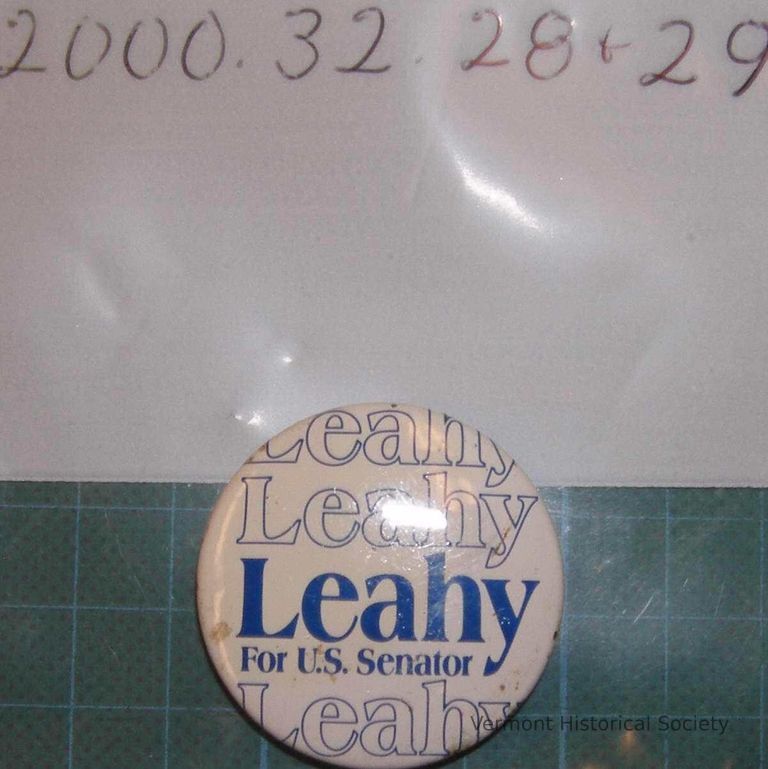
Campaign Button
Name/Title
Campaign Button
Lexicon
Description
Round white metal collar button consisting of a large metal circle with a tab ending in a small metal circle. The large circle is printed with the blue inscription, “Leahy For U.S. Senator”, surrounded by outlines of the word “Leahy”.
Acquisition
Accession
2000.32
Relationships
Related Person or Organization
Leahy, Patrick Joseph (b. 1940)
Person or Organization
Made/Created
Date made
1974
Manufacturer
Graphic Comunications International Union
Dimensions
Materials
Material
Metal
Entry/Object ID
2000.32.29
Context
Produced for one of the senatorial campaigns of Patrick Leahy.


Campaign Button
Name/Title
Campaign Button
Lexicon
Description
Round campaign button with the inscription, "BEV MAJOR VERMONT SENATE", over an illustration of green hills and a blue sky.
Acquisition
Accession
2022.5
Relationships
Related Person or Organization
Major, Beverly B. (1935-2020)
Person or Organization
Related Places
Place
Westminster
Town
Windham County
County
Vermont
State/Province
United States of America
Country
North America
Made/Created
Date made
1990
Materials
Material
Metal
Entry/Object ID
2022.5.9
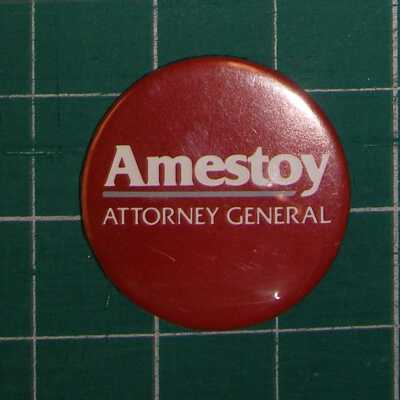
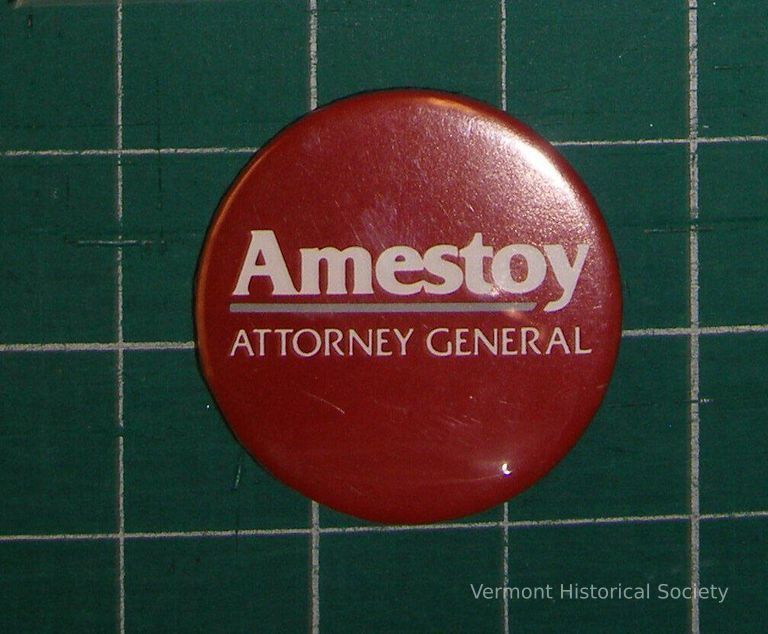
Campaign Button
Name/Title
Campaign Button
Lexicon
Description
Round red button with the white inscription, "Amestoy ATTORNEY GENERAL".
Acquisition
Accession
2013.13
Relationships
Related Person or Organization
Amestoy, Jeffrey Lee (b. 1946)
Person or Organization
Related Places
Place
Vermont
State/Province
United States of America
Country
North America
Made/Created
Date made
1985-1997
Dimensions
Dimension Description
Overall
Materials
Material
Metal
Entry/Object ID
2013.13.1
Context
Made for one of Jeffrey Amestoy's campaign for Attorney General of Vermont.


Campaign Button
Name/Title
Campaign Button
Lexicon
Description
Round red button with a yellow stripe across the center and the red inscription, "GARLAND".. Printed along edge in yellow letters is the label "Garland for Senate Campaign Committee Horn Co., Phila., PA 19126"
Acquisition
Accession
2013.13
Relationships
Related Person or Organization
Garland, Margaret P. (1922-2003)
Person or Organization
Related Places
Place
Burlington
City
Chittenden County
County
Vermont
State/Province
United States of America
Country
North America
Made/Created
Manufacturer
Horn Company
Dimensions
Dimension Description
Overall
Materials
Material
Metal
Entry/Object ID
2013.13.3
Context
Made for the senatorial campaign of Margaret "Peg" Garland. Margaret P. Garland was the Republican candidate for Lieutenant Governor in 1980, and lost to Democrat Madeleine Kunin.
Web Links and URLs
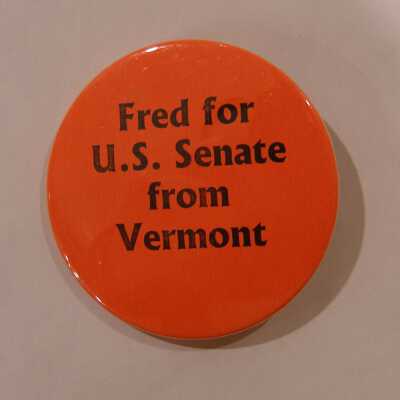

Campaign Button
Name/Title
Campaign Button
Lexicon
Description
Round orange pin with the black inscription, "Fred for U.S. Senate from Vermont". A maker's mark is stamped on the back and reads, "BADGE-A-MINIT 1-800-223-4103".
Acquisition
Accession
2011.70
Relationships
Related Person or Organization
Tuttle, Frederick Herman (1919-2003)
Person or Organization
Related Places
Place
Vermont
State/Province
United States of America
Country
North America
Made/Created
Date made
1998
Manufacturer
Badge-a-Minit
Dimensions
Dimension Description
Overall
Materials
Material
Plastic, Metal
Entry/Object ID
2011.70.1
Context
Made for the campaign of Fred Tuttle for US Senate in 1998.
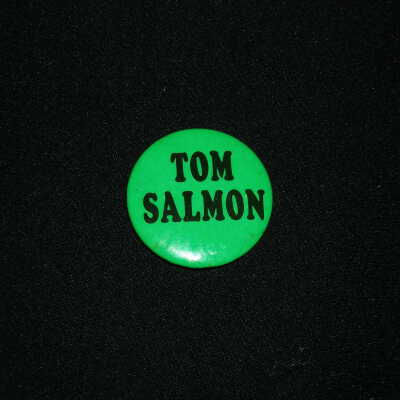
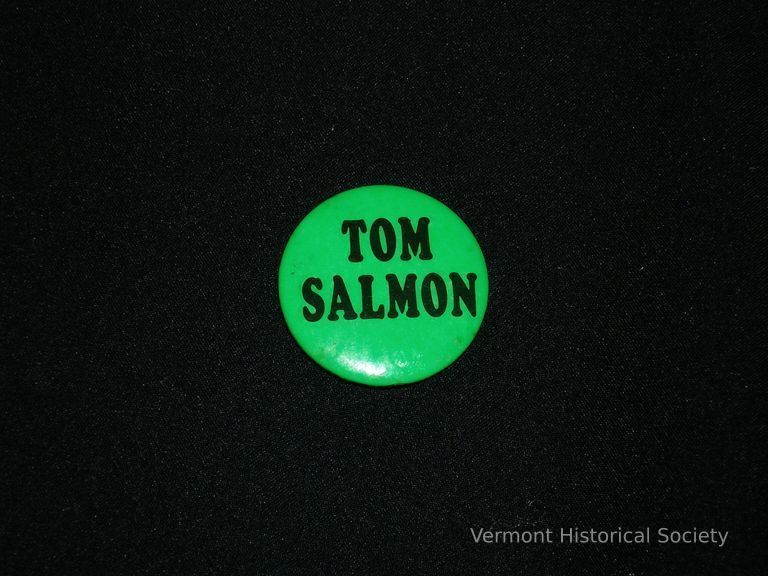
Campaign Button
Name/Title
Campaign Button
Lexicon
Description
A campaign pin for Thomas P. Salmon, Democrat. The background of the button is light green with black text reading, "Tom Salmon." It has a small company symbol along the rim below the text. It is made of steel with a copper pin.
Acquisition
Accession
2005.9
Relationships
Related Person or Organization
Salmon, Thomas Paul (b. 1932)
Person or Organization
Made/Created
Date made
1965-1976
Dimensions
Materials
Material
Steel, Copper, Paper
Entry/Object ID
2005.9.3
Context
Tom Salmon was governor of Vermont from 1973-1977.
From https://www.nga.org/governor/thomas-p-salmon/
"Born in Cleveland, Ohio, THOMAS P. SALMON graduated from Boston College in 1954 and received a J.D. from Boston College Law School in 1957 and an LL.M. from New York University School of Law in 1958. He went on to serve on the Rockingham, Vermont Town Counsel from 1959 to 1972 and as a Municipal Court Judge in Bellows Falls from 1963 to 1965. He was a member of the State House of Representatives from 1965 to 1970, serving as Minority Leader for two years. As governor, he chaired the New England Governors’ Conference for two years and was a member of the National Governors Association’s Executive Committee. In 1976, he made an unsuccessful bid for a U.S. Senate seat, but went on to become president of the University of Vermont."
From https://www.nga.org/governor/thomas-p-salmon/
"Born in Cleveland, Ohio, THOMAS P. SALMON graduated from Boston College in 1954 and received a J.D. from Boston College Law School in 1957 and an LL.M. from New York University School of Law in 1958. He went on to serve on the Rockingham, Vermont Town Counsel from 1959 to 1972 and as a Municipal Court Judge in Bellows Falls from 1963 to 1965. He was a member of the State House of Representatives from 1965 to 1970, serving as Minority Leader for two years. As governor, he chaired the New England Governors’ Conference for two years and was a member of the National Governors Association’s Executive Committee. In 1976, he made an unsuccessful bid for a U.S. Senate seat, but went on to become president of the University of Vermont."
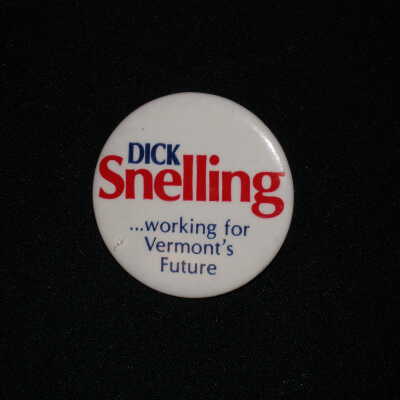
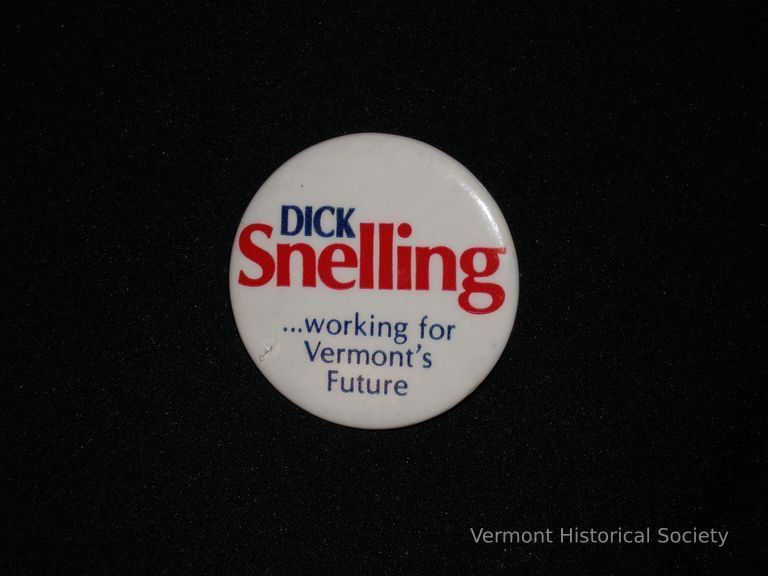
Campaign Button
Name/Title
Campaign Button
Lexicon
Description
A campaign button for Richard A. Snelling. The button has white background, and in small blue text, "Dick", immediately below that in much larger red text is "Snelling." At the bottom of the button in small blue text reads, "...working for Vermont's future." The button also has a nearly illegible maker's mark in blue, on the side of the button below the text. The button is steel with integral brass pin.
Acquisition
Accession
2005.9
Relationships
Related Person or Organization
Snelling, Richard Arkwright (1927-1991)
Person or Organization
Dimensions
Materials
Material
Steel, Brass, Paper
Entry/Object ID
2005.9.10
Context
In 1986, Richard Snelling, a Republican, challenged the Democratic incumbent, Patrick Leahy, for his U.S. Senate seat and lost. Snelling is best known as a former Vermont governor. Below is his bio from https://www.nga.org/governor/richard-a-snelling/
"RICHARD A. SNELLING was born in Allentown, Pennsylvania. He received his bachelor’s degree in government and economics from Harvard University in 1948. He was in the U.S. Army Infantry in Europe from 1945 to 1946. He founded Shelburne Industries, Inc., and chaired several companies. His business affiliations include the Young Presidents’ Association, the Chief Executives Organization, and the World Business Council. He was director of Ski Industries of America and Associated Industries of Vermont and was elected to the Vermont House of Representatives. He served six terms in the legislature, where he was the majority leader from 1975 to 1976. He also served on the Governor’s Commission on the Environment, and the Chittenden County Regional Planning Commission, and chaired the Vermont Aeronautics Board. He was first elected as Governor of Vermont in 1976 and served four consecutive terms. He was appointed to the Advisory Commission on Intergovernmental Relations by President Jimmy Carter and was reappointed by President Ronald Reagan. He chaired the National Governors Association (1981-1982), the New England Governors’ Conference, and the Republican Governors Association. Snelling won an unprecedented fifth term as governor in 1990 but died suddenly eight months after taking office."
"RICHARD A. SNELLING was born in Allentown, Pennsylvania. He received his bachelor’s degree in government and economics from Harvard University in 1948. He was in the U.S. Army Infantry in Europe from 1945 to 1946. He founded Shelburne Industries, Inc., and chaired several companies. His business affiliations include the Young Presidents’ Association, the Chief Executives Organization, and the World Business Council. He was director of Ski Industries of America and Associated Industries of Vermont and was elected to the Vermont House of Representatives. He served six terms in the legislature, where he was the majority leader from 1975 to 1976. He also served on the Governor’s Commission on the Environment, and the Chittenden County Regional Planning Commission, and chaired the Vermont Aeronautics Board. He was first elected as Governor of Vermont in 1976 and served four consecutive terms. He was appointed to the Advisory Commission on Intergovernmental Relations by President Jimmy Carter and was reappointed by President Ronald Reagan. He chaired the National Governors Association (1981-1982), the New England Governors’ Conference, and the Republican Governors Association. Snelling won an unprecedented fifth term as governor in 1990 but died suddenly eight months after taking office."
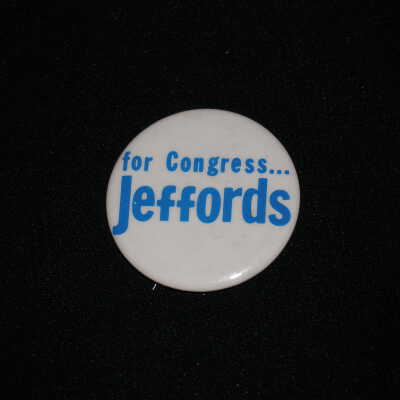
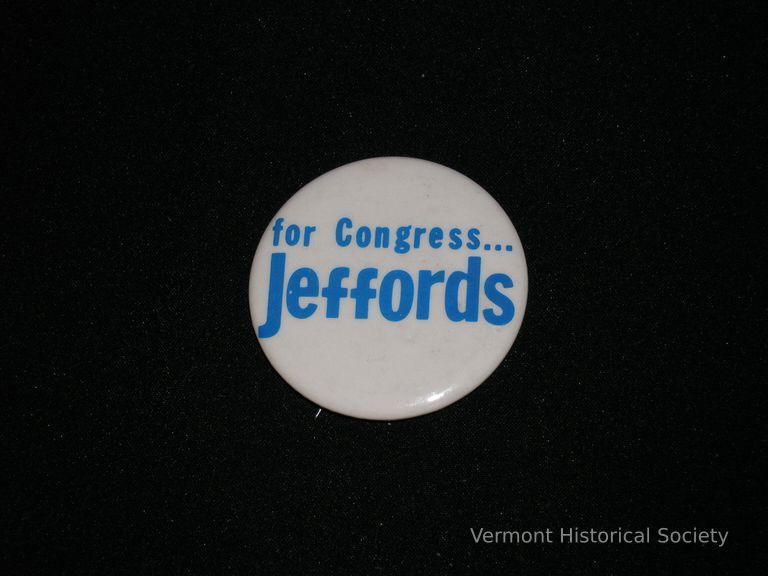
Campaign Button
Name/Title
Campaign Button
Lexicon
Description
This is a campaign button for James M. Jeffords, Republican/Independent, in his race for the seat as Vermont's Representatives in the House of Representatives. The button is white with blue text reading, "for Congress...Jeffords." The button is steel and the pin is copper.
Acquisition
Accession
2005.9
Relationships
Related Person or Organization
Jeffords, James Merrill (1934-2014)
Person or Organization
Made/Created
Date made
1974-1986
Dimensions
Materials
Material
Steel, Copper, Paper
Entry/Object ID
2005.9.15
Context
Produced for Jim Jeffords' congressional campaign.
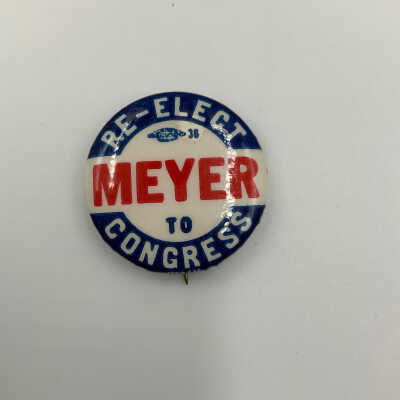
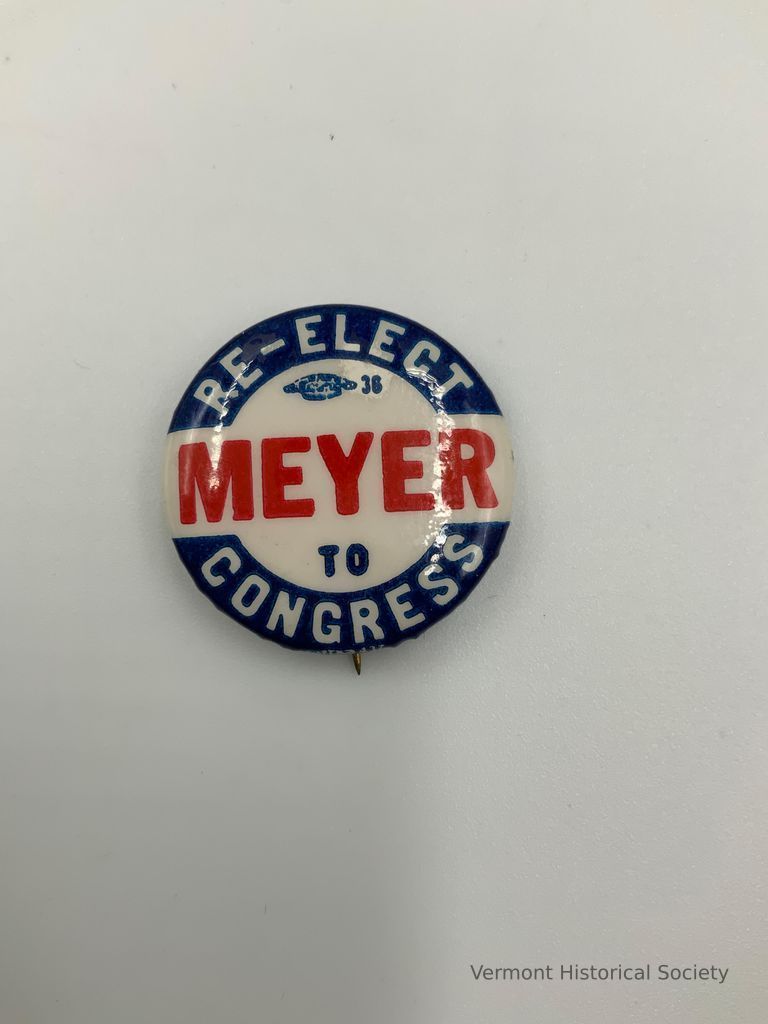
Campaign Button
Name/Title
Campaign Button
Lexicon
Description
Round campaign button with the inscription, "RE-ELECT MEYER TO CONGRESS".
Acquisition
Accession
2022.5
Relationships
Related Person or Organization
Meyer, William Henry (1914-1983)
Person or Organization
Materials
Material
Metal
Entry/Object ID
2022.5.11
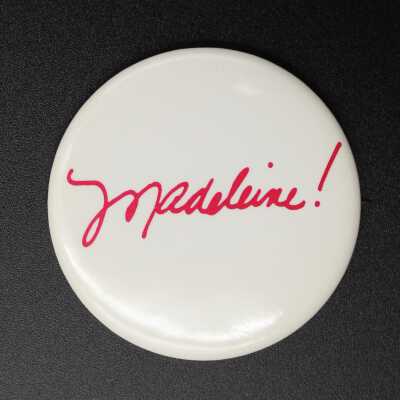
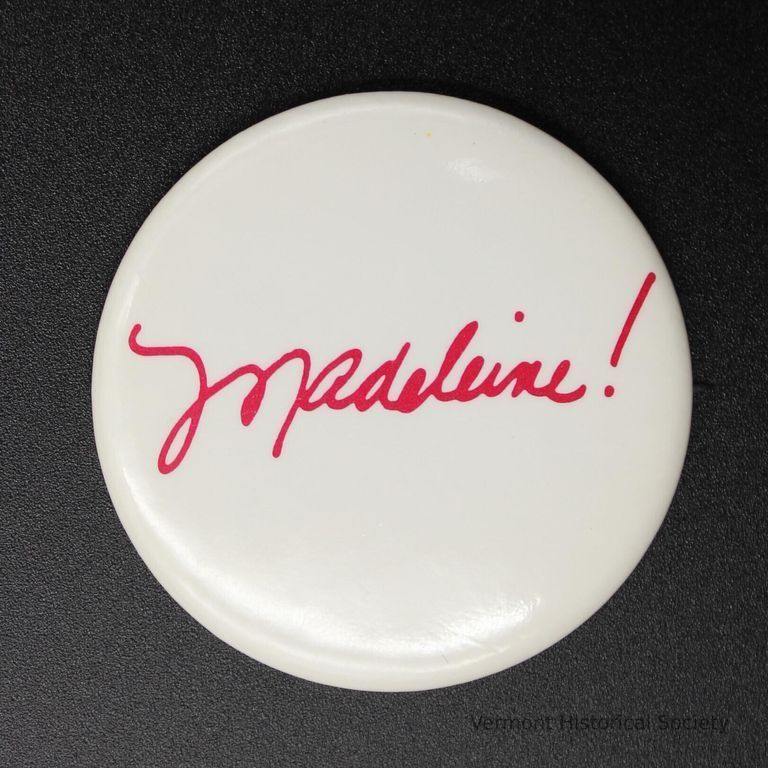
Campaign Button
Name/Title
Campaign Button
Lexicon
Description
Campaign pin for Madeleine Kunin, Governor of Vermont, 1985-1991. White background with "Madeleine!" in red script
Acquisition
Accession
2010.11
Relationships
Related Person or Organization
Kunin, Madeleine May (b. 1933)
Person or Organization
Made/Created
Date made
1973-1991
Dimensions
Materials
Material
Metal
Entry/Object ID
2010.11.44
Context
Produced for one of the gubernatorial campaigns of Madeleine Kunin
Web Links and URLs
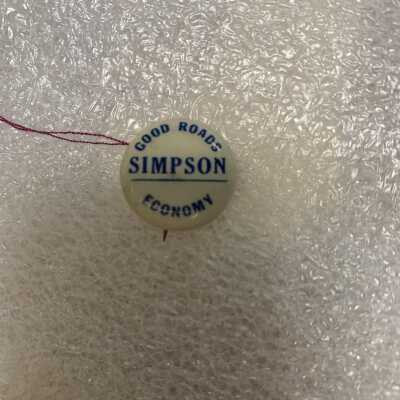
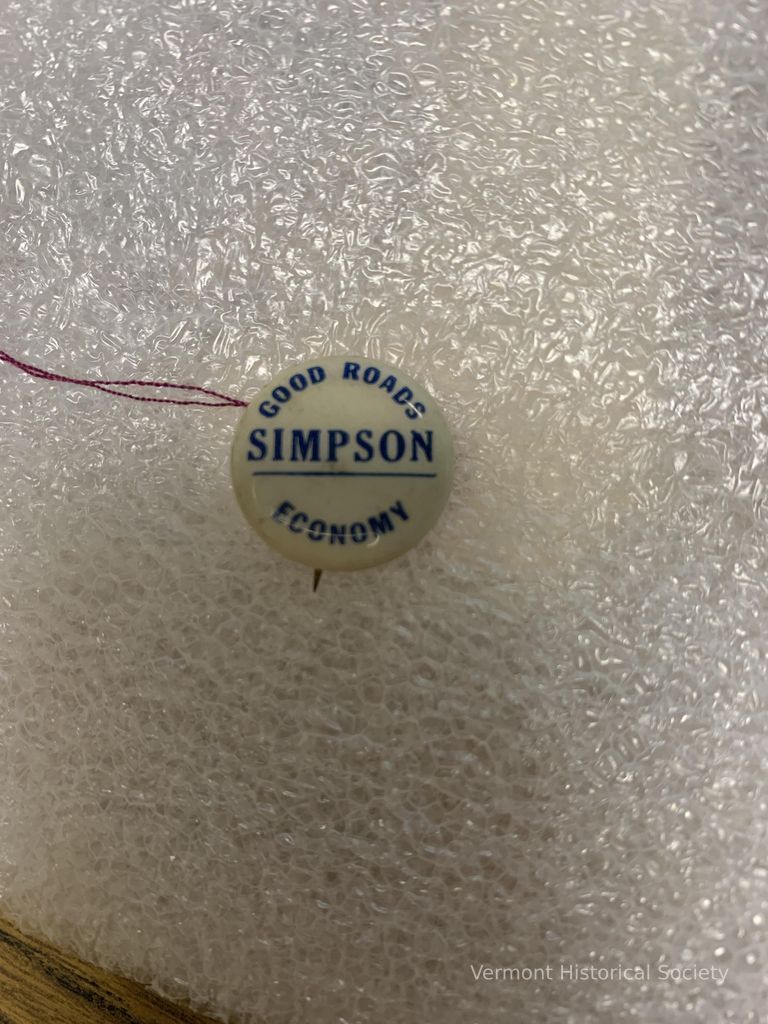
Campaign Button
Name/Title
Campaign Button
Lexicon
Description
Tiny white campaign pin with blue lettering that reads, "Good Roads, Economy" around the perimeter and "Simpson" in the center.
Acquisition
Accession
1992.87
Relationships
Related Person or Organization
Simpson, Wilder Arthur
Person or Organization
Made/Created
Date made
1930-1960
Dimensions
Dimension Description
Overall
Materials
Material
Metal
Entry/Object ID
1992.87.7
Context
A campaign pin for W. Arthur Simpson (1888-) of Lyndon, who ran for governor four times -- 1930, 1932, 1944 and 1960 -- and lost each time in the Republican primary. One of his campaign promises was to improve roads, pave roads and provide funding for rural roads without raising taxes. He served in the Legislature and served as on the social welfare commission and the state highway board and was well-liked by Democratic as well as Republican politicians.
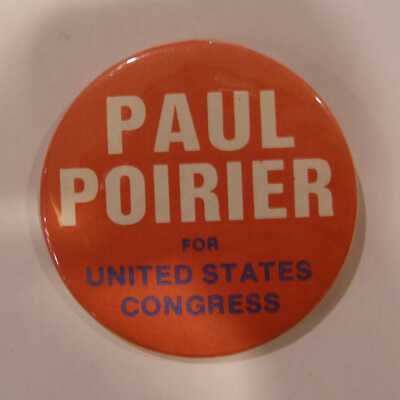
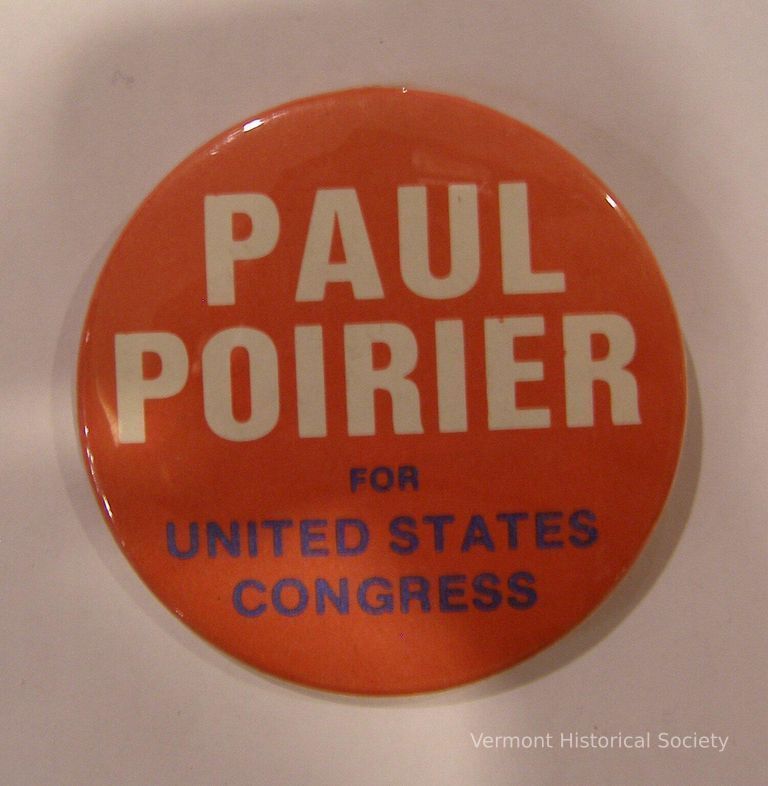
Campaign Button
Name/Title
Campaign Button
Lexicon
Description
Red background with white and blue lettering: "PAUL / POIRIER / FOR / UNITED STATES / CONGRESS"
Acquisition
Accession
2011.70
Relationships
Related Person or Organization
Poirier, Paul N. (b. 1948)
Person or Organization
Made/Created
Date made
1988
Dimensions
Entry/Object ID
2011.70.8
Context
In 1988 Republican Peter Smith won the U.S. House seat with 41%. In that election, independent Bernard Sanders had 38%, and Democrat Paul Poirier received 19% with a bit over 2% divided among the remaining three candidates.
This was Poirier's sole run for statewide office, but he has run legislative races starting with an unsuccessful bid for a House seat in 1986. He ran several times for the state senate in the early 1990s, won election to the House in 1996 and again in 1998. He tried again for the state senate in 2000 and lost. He tried unsuccessfully to return to the House in 2006, and was successful in 2008, winning re-election in 2010, 2012 and 2014 before losing in 2016.
This was Poirier's sole run for statewide office, but he has run legislative races starting with an unsuccessful bid for a House seat in 1986. He ran several times for the state senate in the early 1990s, won election to the House in 1996 and again in 1998. He tried again for the state senate in 2000 and lost. He tried unsuccessfully to return to the House in 2006, and was successful in 2008, winning re-election in 2010, 2012 and 2014 before losing in 2016.
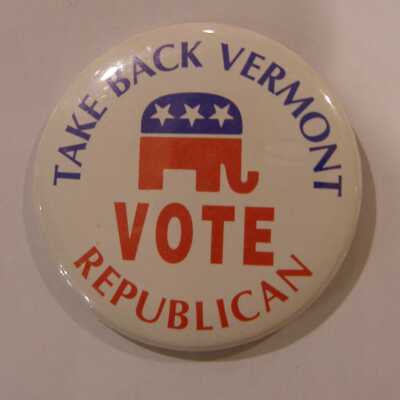

Campaign Button
Name/Title
Campaign Button
Lexicon
Description
Round white button with the blue and red inscription, "TAKE BACK VERMONT VOTE REPUBLICAN" and an image of an elephant that is blue with stars on the top half and red on the bottom half.
Acquisition
Accession
2011.70
Relationships
Related Person or Organization
Republican Party
Person or Organization
Related Places
Place
Vermont
State/Province
United States of America
Country
North America
Made/Created
Date made
2000
Dimensions
Dimension Description
Overall
Materials
Material
Metal, Plastic
Entry/Object ID
2011.70.10
Context
Made for the 2000 election in opposition to Civil Unions.
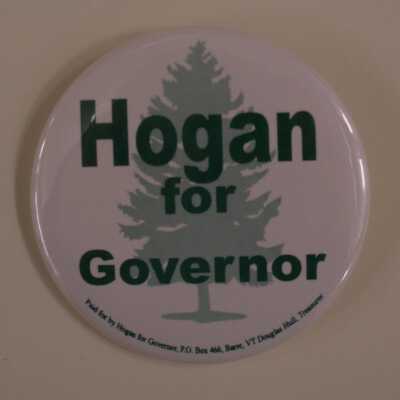
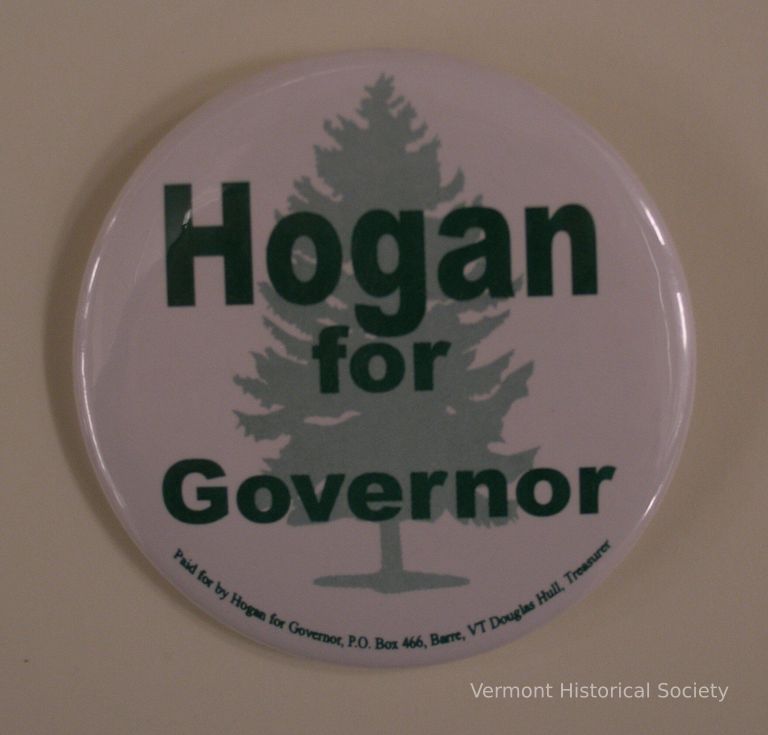
Campaign Button
Name/Title
Campaign Button
Lexicon
Description
Round white button with a light-green silhouette of an evergreen tree and the dark green inscription, "Hogan for Governor'. The tiny inscription, "Paid for by Hogan for Governor, P.O. Box 466, Barre, VT Douglas Hull, Treasurer" rings the bottom edge.
Acquisition
Accession
2011.70
Relationships
Related Person or Organization
Hogan, Cornelius (1942-2018)
Person or Organization
Related Places
,
Made/Created
Date made
2002
Dimensions
Dimension Description
Overall
Materials
Material
Metal, Plastic
Entry/Object ID
2011.70.11
Context
Made for the unsuccessful gubernatorial campaign of Cornelius "Con" Hogan in 2002. He ran as an independent, having previously identified as a Republican. The Republican candidate and eventual winner was Jim Douglas with 103,436 votes. The Democrat, Doug Racine, received 97,565 votes and Hogan received 22,353.
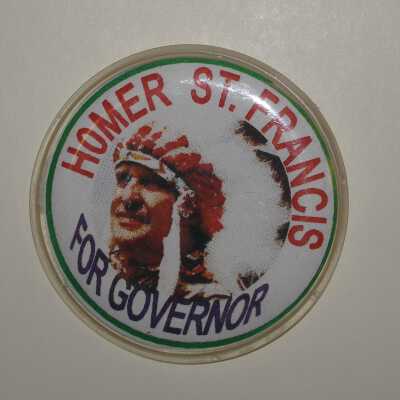

Campaign Button
Name/Title
Campaign Button
Lexicon
Description
Round white button with narrow green border, color photograph of a man in an indigenous American feathered war bonnet, and the inscription "HOMER ST. FRANCIS FOR GOVERNOR". The button is formed by two sheets of plastic sandwiching a round piece of paper.
Acquisition
Accession
2011.70
Ethnography
Relationships
Related Person or Organization
St. Francis, Homer (1935-2001)
Person or Organization
Related Places
Place
Swanton
Town
Franklin County
County
Vermont
State/Province
United States of America
Country
North America
Made/Created
Date made
1990
Dimensions
Dimension Description
Overall
Materials
Material
Plastic, Metal
Entry/Object ID
2011.70.12
Context
Made for the gubernatorial campaign of Homer St. Francis in 1990, but the Vermont Secretary of State doesn't list him as a candidate in any primary or the general election that year. In fact, he isn't listed as a candidate in any election in that state database.
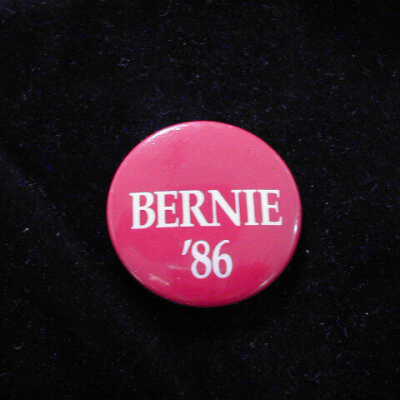

Campaign Button
Name/Title
Campaign Button
Lexicon
Description
Round red button with the white inscription, "BERNIE '86".
Acquisition
Accession
1988.28
Relationships
Related Person or Organization
Sanders, Bernard (b. 1941)
Person or Organization
Related Places
Place
Burlington
City
Chittenden County
County
Vermont
State/Province
United States of America
Country
North America
Made/Created
Date made
1986
Dimensions
Entry/Object ID
1988.28.16
Context
Produced for the 1986 campaign of Bernie Sanders for mayor of Burlington, Vermont


Campaign Button
Name/Title
Campaign Button
Lexicon
Description
Round white metal button printed with an image of a bald eagle carrying a United States flag and a large marijuana leaf. The image is surrounded by the inscription, "DENNIS LANE for GOVERNOR / VT. GRASSROOTS PARTY".
Context
Context
Acquisition
Accession
2021.24
Relationships
Related Person or Organization
Lane, Dennis (1947-2013), Grassroots Party
Made/Created
Date made
1994-1996
Materials
Material
Metal
Entry/Object ID
2021.24.7
Context
Made to promote the unsuccessful 1994 or 1996 campaign of Dennis Lane for Governor of Vermont


Campaign Button
Name/Title
Campaign Button
Lexicon
Description
Four small, red, white and blue pins for various political campaigns of Thomas Dewey. One says “Dewey for President. Two say Dewey/Warren and one says Dewey/Bricker.
Acquisition
Accession
1965.14
Relationships
Related Person or Organization
Dewey, Thomas Edmund (1902-1971)
Person or Organization
Dimensions
Entry/Object ID
1965.14.18c
Context
From www.britannica.com: “Thomas E. Dewey, in full Thomas Edmund Dewey, (born March 24, 1902, Owosso, Mich., U.S.—died March 16, 1971, Bal Harbour, Fla.), vigorous American prosecuting attorney whose successful racket-busting career won him three terms as governor of New York (1943–55). A longtime Republican leader, he was his party’s presidential nominee in 1944 and 1948 but lost in both elections.”
One pin has the names “Dewey” and “Bricker.” John W. Bricker, the governor of Ohio, was the vice presidential nominee on the Republican ticket in 1944. In 1948, Dewey teamed with Earl Warren, the governor of California to try again to defeat Roosevelt and his vice presidential choice, Harry S. Truman.
To see more on Dewey, go to https://www.britannica.com/biography/Thomas-E-Dewey.
One pin has the names “Dewey” and “Bricker.” John W. Bricker, the governor of Ohio, was the vice presidential nominee on the Republican ticket in 1944. In 1948, Dewey teamed with Earl Warren, the governor of California to try again to defeat Roosevelt and his vice presidential choice, Harry S. Truman.
To see more on Dewey, go to https://www.britannica.com/biography/Thomas-E-Dewey.
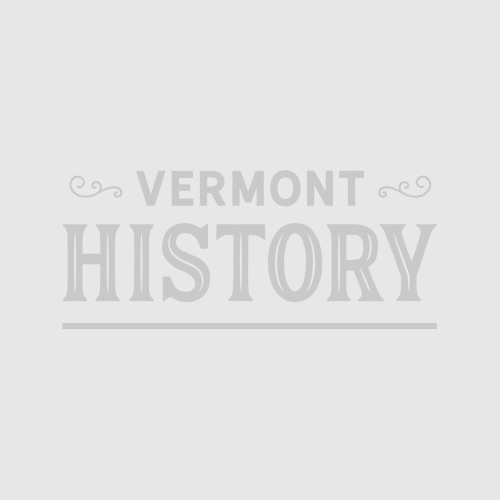
Campaign Pin
Name/Title
Campaign Pin
Lexicon
Description
Box of miscellaneous Civil War and GAR materials.
a) envelope of "Badge Ribbons"
b) cufflinks and gold buttons in white and pink box
c) top of a badge, a rampant eagle
d) string of buttons
e) brass tag Roosevelt and Fairbanks
f) string of Mass. buttons
g) souvenir GAR badge
h) V.N.G. pin
i) Vt. GAR badge
j) Mil. Order of Loyal Legion medal
k) watch chain/fob
l) cufflinks
m) cufflinks
n) ribbon cufflinks, collar stays in white box
o) folding mother of pearl button hook
p) key
q) brown buttons
r) assorted buttons/cuff links
s) mourning ribbon
a) envelope of "Badge Ribbons"
b) cufflinks and gold buttons in white and pink box
c) top of a badge, a rampant eagle
d) string of buttons
e) brass tag Roosevelt and Fairbanks
f) string of Mass. buttons
g) souvenir GAR badge
h) V.N.G. pin
i) Vt. GAR badge
j) Mil. Order of Loyal Legion medal
k) watch chain/fob
l) cufflinks
m) cufflinks
n) ribbon cufflinks, collar stays in white box
o) folding mother of pearl button hook
p) key
q) brown buttons
r) assorted buttons/cuff links
s) mourning ribbon
Acquisition
Accession
1986.18
Relationships
Related Person or Organization
Branch, Charles Francis, Sr. (1845-1910)
Person or Organization
Entry/Object ID
1986.18.74e
Context
From a collection of historic objects assembled by Civil War veteran and UVM trained physician Charles F. Branch.
From the finding aid for the Charles F. Branch collection in the Vermont Historical Society Library:
"Charles Franklin Branch, the son of Orson Smith and Rodilla (Felton) Branch,
was born on 9 December 1845 and grew up on a farm in Orwell, Vermont. In 1862, he
enlisted with the 9th Vermont Volunteers at age 16 and remained in the service until he
was mustered out on 1 December 1865. Charles F. Branch rose in rank from private to
major and was cited for meritorious conduct at the capture of Richmond.
After the war he worked on his father’s farm. In 1875, he resumed his education
which had been interrupted by the war, graduating from the medical school at the
University of Vermont in 1879. That same year he set up practice in Coventry, Vermont,
before later moving to Newport in 1887. Dr. Branch also taught at the University of
Vermont and was surgeon-general of the state from 1886 to 1888. In 1895, he was
president of the Vermont State Medical Society. He removed his practice to Amherst,
Massachusetts, in 1896, where he also served as medical examiner for 11 years.
An active member of the Grand Army of the Republic (GAR), Charles Branch
served as commander of Department Vermont and was “esteemed one of the best
speakers on the subject of war in the state” (Ullery, Men of Vermont). Charles Branch
died in Amherst, Massachusetts, on August 27, 1907. He had a son and three daughters
and was married four times: Emma Cook (d. 1876); Ida Burbank (1858-1889); Martha J.
Stewart (d. 1894); Clara Bell Greenwood (1872-1956)."
From the finding aid for the Charles F. Branch collection in the Vermont Historical Society Library:
"Charles Franklin Branch, the son of Orson Smith and Rodilla (Felton) Branch,
was born on 9 December 1845 and grew up on a farm in Orwell, Vermont. In 1862, he
enlisted with the 9th Vermont Volunteers at age 16 and remained in the service until he
was mustered out on 1 December 1865. Charles F. Branch rose in rank from private to
major and was cited for meritorious conduct at the capture of Richmond.
After the war he worked on his father’s farm. In 1875, he resumed his education
which had been interrupted by the war, graduating from the medical school at the
University of Vermont in 1879. That same year he set up practice in Coventry, Vermont,
before later moving to Newport in 1887. Dr. Branch also taught at the University of
Vermont and was surgeon-general of the state from 1886 to 1888. In 1895, he was
president of the Vermont State Medical Society. He removed his practice to Amherst,
Massachusetts, in 1896, where he also served as medical examiner for 11 years.
An active member of the Grand Army of the Republic (GAR), Charles Branch
served as commander of Department Vermont and was “esteemed one of the best
speakers on the subject of war in the state” (Ullery, Men of Vermont). Charles Branch
died in Amherst, Massachusetts, on August 27, 1907. He had a son and three daughters
and was married four times: Emma Cook (d. 1876); Ida Burbank (1858-1889); Martha J.
Stewart (d. 1894); Clara Bell Greenwood (1872-1956)."
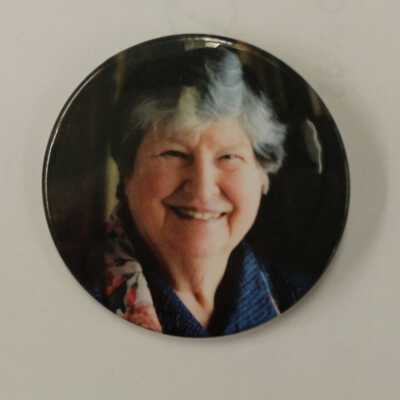
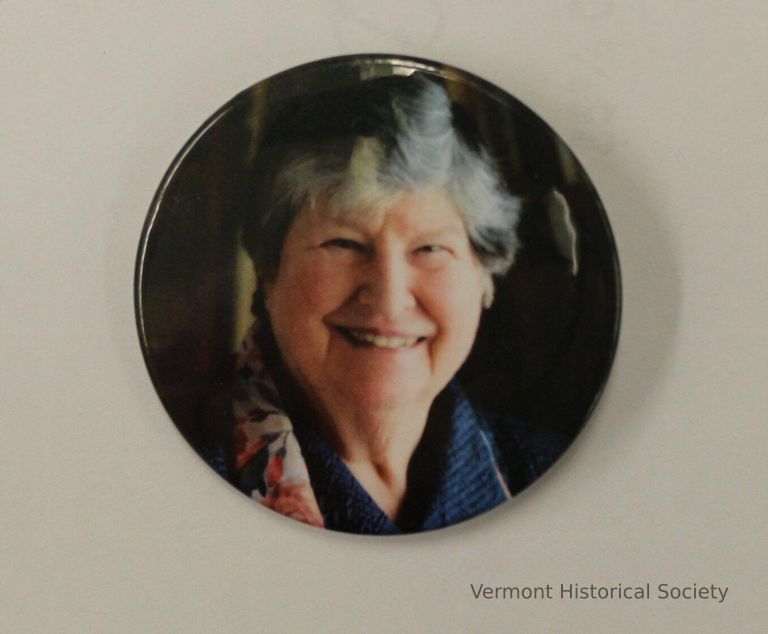
Commemorative Button
Name/Title
Commemorative Button
Description
Photo of Barbara Snelling, given out at her memorial service on Nov. 13, 2015.
Acquisition
Accession
2015.47
Relationships
Related Person or Organization
Snelling, Barbara W. (1928-2015)
Person or Organization
Made/Created
Date made
2015
Dimensions
Materials
Material
Metal
Entry/Object ID
2015.47.28
Context
This pin was given out at the Memorial Service for Barbara W. Snelling on November 13, 2015, at the State House.
From her obituary in https://www.legacy.com/us/obituaries/burlingtonfreepress/name/barbara-snelling-obituary?pid=176339872
"Barbara W. Snelling, a Vermont icon, died peacefully on November 2, 2015 at her home in So. Burlington surrounded by her family. Barbara Tuttle Weil was born in Fall River, Massachusetts on March 22, 1928 to the Reverend F. Taylor and Hazel (Russell) Weil. Barbara was the former Lt. Governor of Vermont and was the wife of former Governor Richard A. Snelling."
She was also a state senator.
From her obituary in https://www.legacy.com/us/obituaries/burlingtonfreepress/name/barbara-snelling-obituary?pid=176339872
"Barbara W. Snelling, a Vermont icon, died peacefully on November 2, 2015 at her home in So. Burlington surrounded by her family. Barbara Tuttle Weil was born in Fall River, Massachusetts on March 22, 1928 to the Reverend F. Taylor and Hazel (Russell) Weil. Barbara was the former Lt. Governor of Vermont and was the wife of former Governor Richard A. Snelling."
She was also a state senator.
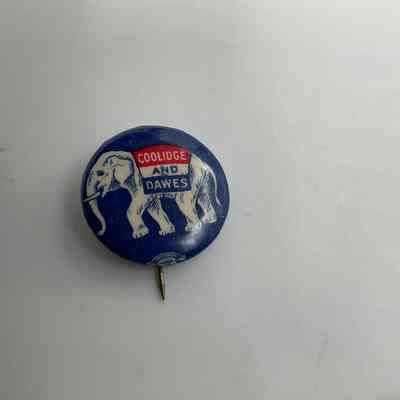
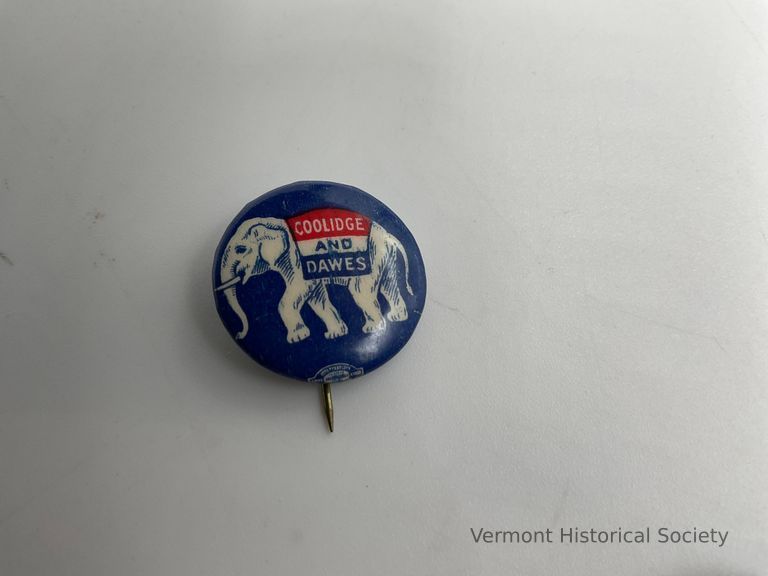
Pin, Campaign
Name/Title
Pin, Campaign
Lexicon
Description
Blue political campaign pin with the image of an elephant with a blanket on its back reading, "Coolidge and Dawes."
Acquisition
Accession
2019.20
Relationships
Related Person or Organization
Coolidge, Calvin (1872-1933)
Person or Organization
Dimensions
Materials
Material
Metal
Entry/Object ID
2019.20.4
Context
Calvin Coolidge, a Republican, became president in 1923 when President Warren Harding died suddenly. In 1924, Coolidge ran for president with Charles Dawes as his vice presidential running mate. They won and served one 4-year term.
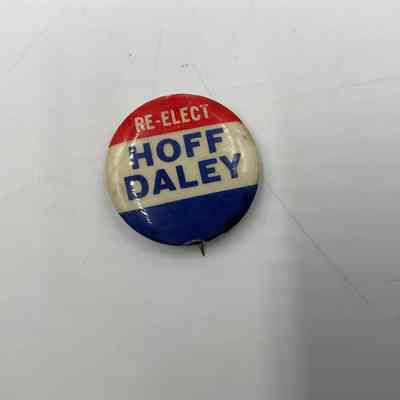
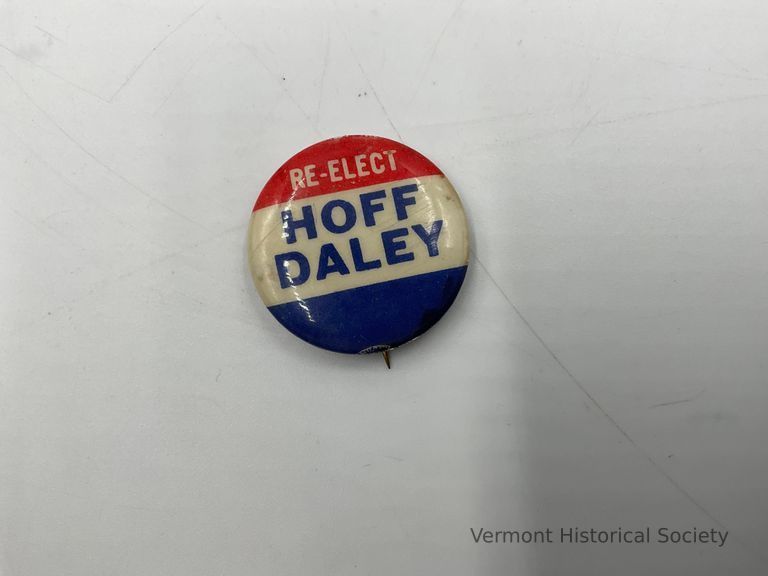
Pin, Campaign
Name/Title
Pin, Campaign
Lexicon
Description
A red, white and blue campaign pin calling for the election of Democrats Phil Hoff, governor, and John. J. Daley, lieutenant governor. The pin says "Re-Elect Hoff Daley."
Acquisition
Accession
2019.20
Relationships
Related Person or Organization
Hoff, Philip Henderson (1924-2018)
Daley, John J. (1923-2000)
Dimensions
Materials
Material
Metal
Entry/Object ID
2019.20.5
Context
Philip Hoff, a Democrat, won election for governor in 1962, the first Democrat elected to that position in Vermont. In 1964 John J. Daley ran for lieutenant governor as a Democrat and was elected. The pair ran for re-election in 1966 and won. Daley ran for governor in 1968 when Hoff didn't seek re-election, but lost to Republican Deane Davis.
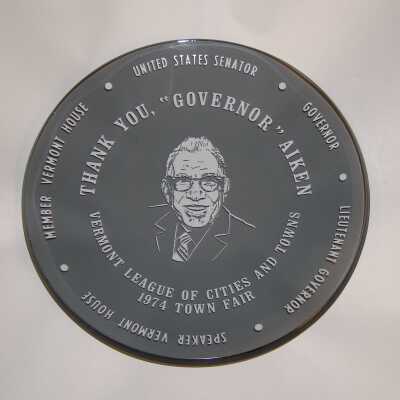

Plate, Commemorative
Name/Title
Plate, Commemorative
Lexicon
Description
Smokey gray glass "Governor" Aiken plate with artwork by the donor. The designs and writing is applied to the front of the plate with white paint(?). Central to the design is a bust of George Aiken with the following written around the plate in two rows (starting at top, clockwise): "UNITED STATES SENATOR.GOVERNOR.LIEUTENANT GOVERNOR.SPEAKER VERMONT HOUSE. MEMBER VERMONT HOUSE. THANK YOU, "GOVERNOR" AIKEN / VERMONT LEAGUE OF CITIES AND TOWNS / 1974 TOWN FAIR" The plate is in its original box.
Acquisition
Accession
2011.56
Relationships
Related Person or Organization
Aiken, George David (1892-1984)
Person or Organization
Dimensions
Materials
Material
Glass
Entry/Object ID
2011.56
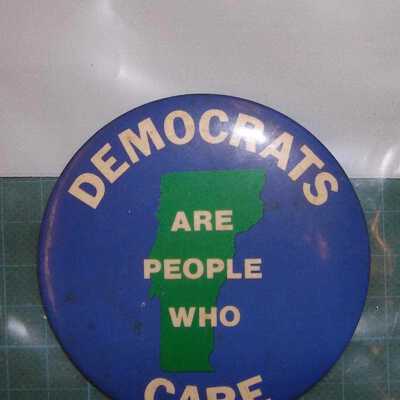
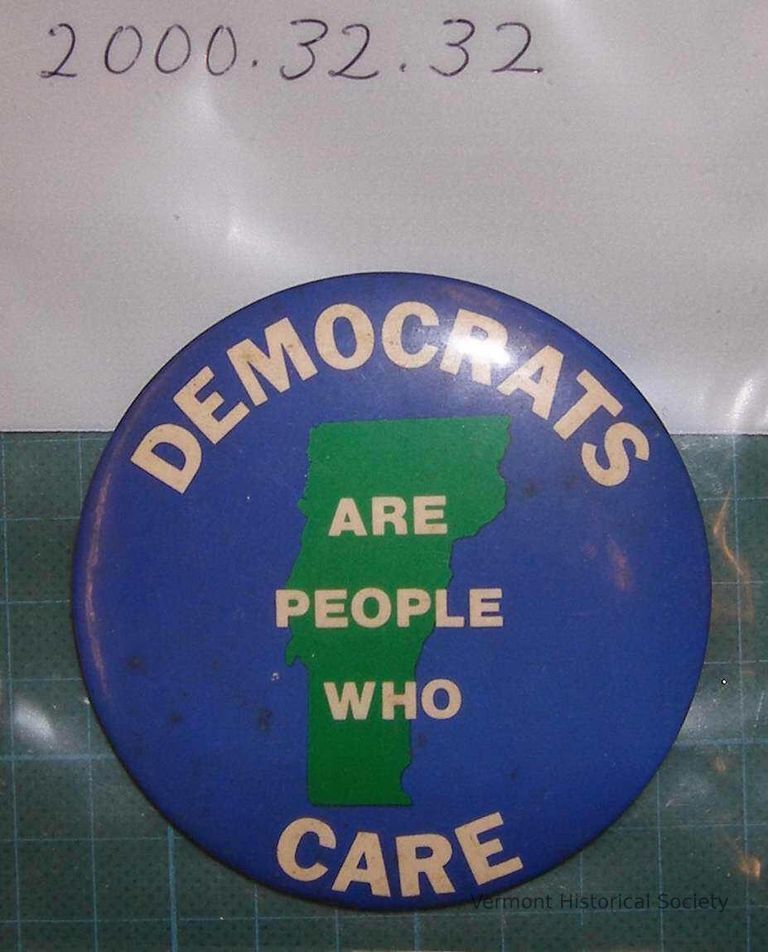
Political Button
Name/Title
Political Button
Lexicon
Description
Blue with green image of state of Vermont in background and "DEMOCRATS ARE PEOPLE WHO CARE" in white lettering.
Acquisition
Accession
2000.32
Relationships
Related Person or Organization
Democratic Party
Person or Organization
Made/Created
Manufacturer
Votes Unlimited
Dimensions
Materials
Material
Metal
Entry/Object ID
2000.32.32
Context
No date associated with this button.
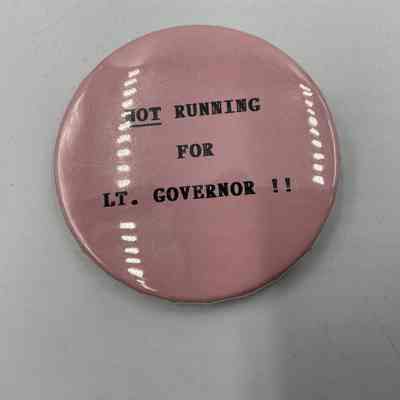
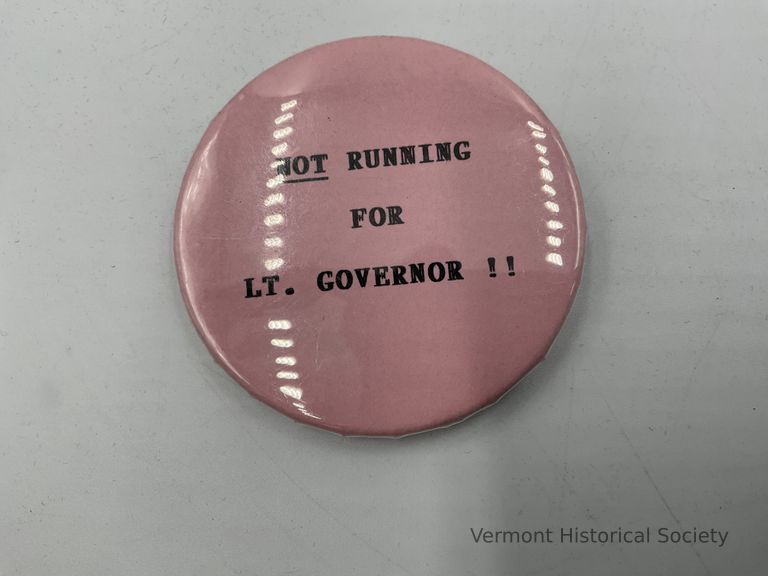
Political Button
Name/Title
Political Button
Lexicon
Description
Pink political pin that says in black printing, "Not running for Lt. Governor !!"
Acquisition
Accession
2023.24
Relationships
Related Places
Place
Montpelier
City
Washington County
County
Vermont
State/Province
United States of America
Country
North America
Continent
Vermont State House
Dimensions
Materials
Material
Metal
Entry/Object ID
2023.24.2
Context
No information as to when this "joke" pin was created or why.

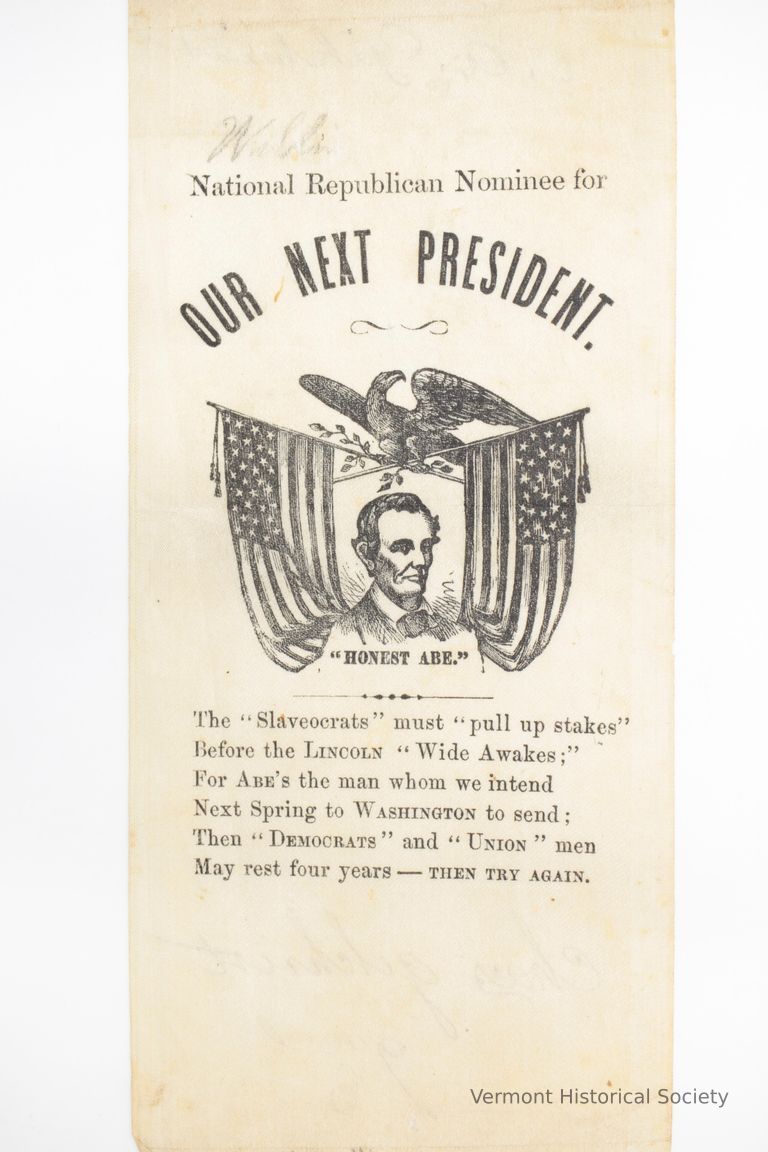
Political Ribbon
Name/Title
Political Ribbon
Lexicon
Description
White satin-woven silk ribbon printed in black with a bust of Abraham Lincoln between two American flags with an eagle. The image is labeled "HONEST ABE." Above the image is the inscription, "National Republican Nominee for OUR NEXT PRESIDENT." Below the image is a poem that reads, "The "Slaveocrats" must "pull up stakes" / Before the LINCOLN "Wide Awakes;" / For ABE'S the man whom we intend / Next Spring to WASHINGTON to send ; / Then "DEMOCRATS" and "UNION" men / May rest four years--THEN TRY AGAIN." The name "William" is handwritten in pencil at the top of the ribbon. The name "Cas gilchrist" is written on the reverse.
Acquisition
Accession
1946.15
Relationships
Related Person or Organization
Lincoln, Abraham (1809-1865), Richardson, James
Woven Textile Details
Warp
Silk
Warp Materials
Weave Type
Satin Weave
Weft
Silk
Weft Materials
Made/Created
Date made
1860
Dimensions
Dimension Description
Overall
Materials
Material
Silk
Entry/Object ID
1946.15.12
Context
Made for the 1860 Republican National Convention, during which Abraham Lincoln was given the presidential nomination. Worn by James Richardson of Warren, Vermont.
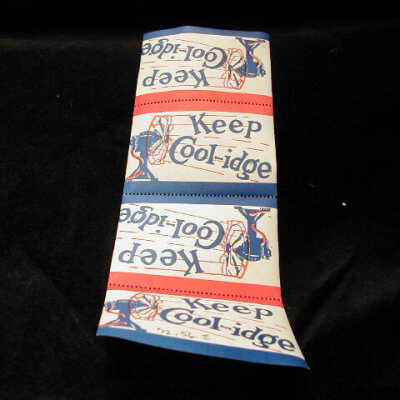

Sticker
Name/Title
Sticker
Lexicon
Description
4 strips of stickers, printed in red, white & blue: "Keep Cool-idge" Printed for 1972 Coolidge Centennial Celebration & official opening of Coolidge Visitor Center at Coolidge birthplace, Plymouth, Vt.
Acquisition
Accession
1972.56
Relationships
Related Person or Organization
Coolidge, Calvin (1872-1933)
Person or Organization
Made/Created
Date made
1972
Dimensions
Entry/Object ID
1972.56.2
Context
From https://www.nps.gov/nr/travel/presidents/calvin_coolidge_homestead.html:
"At 2:47am on August 3, 1923, Vice President Calvin Coolidge became the 30th president of the United States when he took the oath of office in the sitting room of this modest frame and clapboard farmhouse. President Harding had died only a few hours earlier. Coolidge’s father, a notary public, administered the oath by the light of a kerosene lamp; he refused to install such modern conveniences as electricity. Located in the tiny community of Plymouth Notch in the beautiful hill country of Vermont, the house where he took the oath of office was also Calvin Coolidge’s boyhood home."
"At 2:47am on August 3, 1923, Vice President Calvin Coolidge became the 30th president of the United States when he took the oath of office in the sitting room of this modest frame and clapboard farmhouse. President Harding had died only a few hours earlier. Coolidge’s father, a notary public, administered the oath by the light of a kerosene lamp; he refused to install such modern conveniences as electricity. Located in the tiny community of Plymouth Notch in the beautiful hill country of Vermont, the house where he took the oath of office was also Calvin Coolidge’s boyhood home."